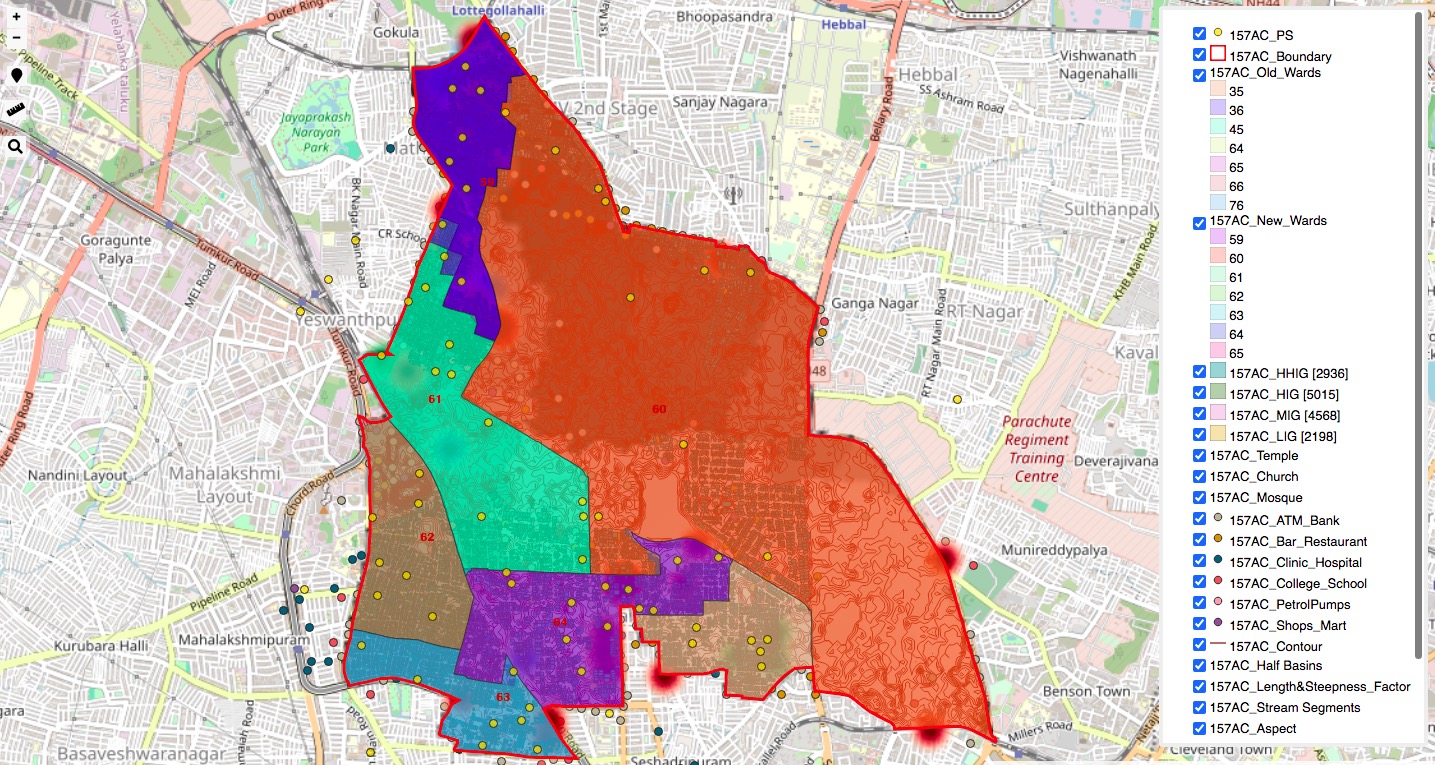1 Live map of high resolution to view smallest data on buildings, roads, footpath, parks, public amenities.
2 Both OSM & Google base map to fetch information for rural, tribal and city.
3 Live measurements tools to measure road lengths, park area, agricultural, commercial parcels, etc.
4 Heat-map of worship places like Temples, Mosque & Church to find the religion dominance.
5 Parliament, Assembly, Ward Constituency boundary with toggle layers option to view POI.
6 Classification of houses as HHIG,HIG,MIG,LIG groups to find economic density for better campaigns.
7 Live GPS locator to self find volunteer location within the canvass area.
8 Compatible with IOS, Android, Tab & Windows without any need of installation of App or software.
